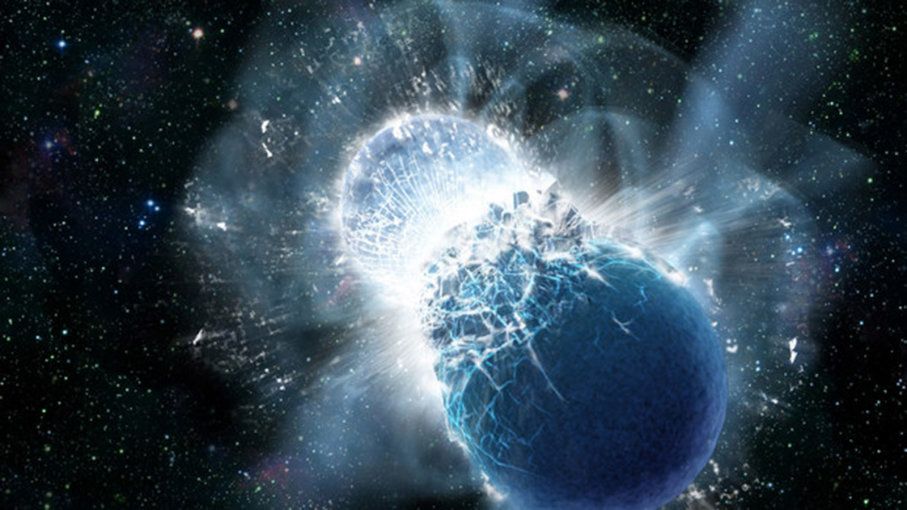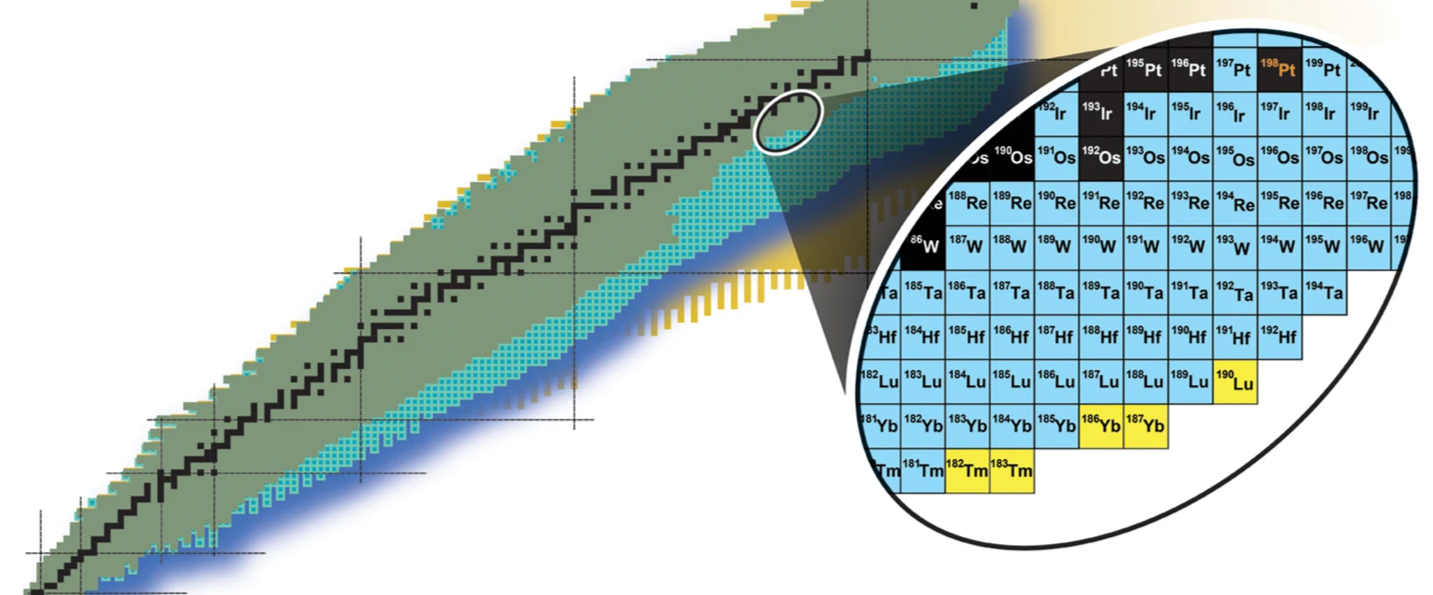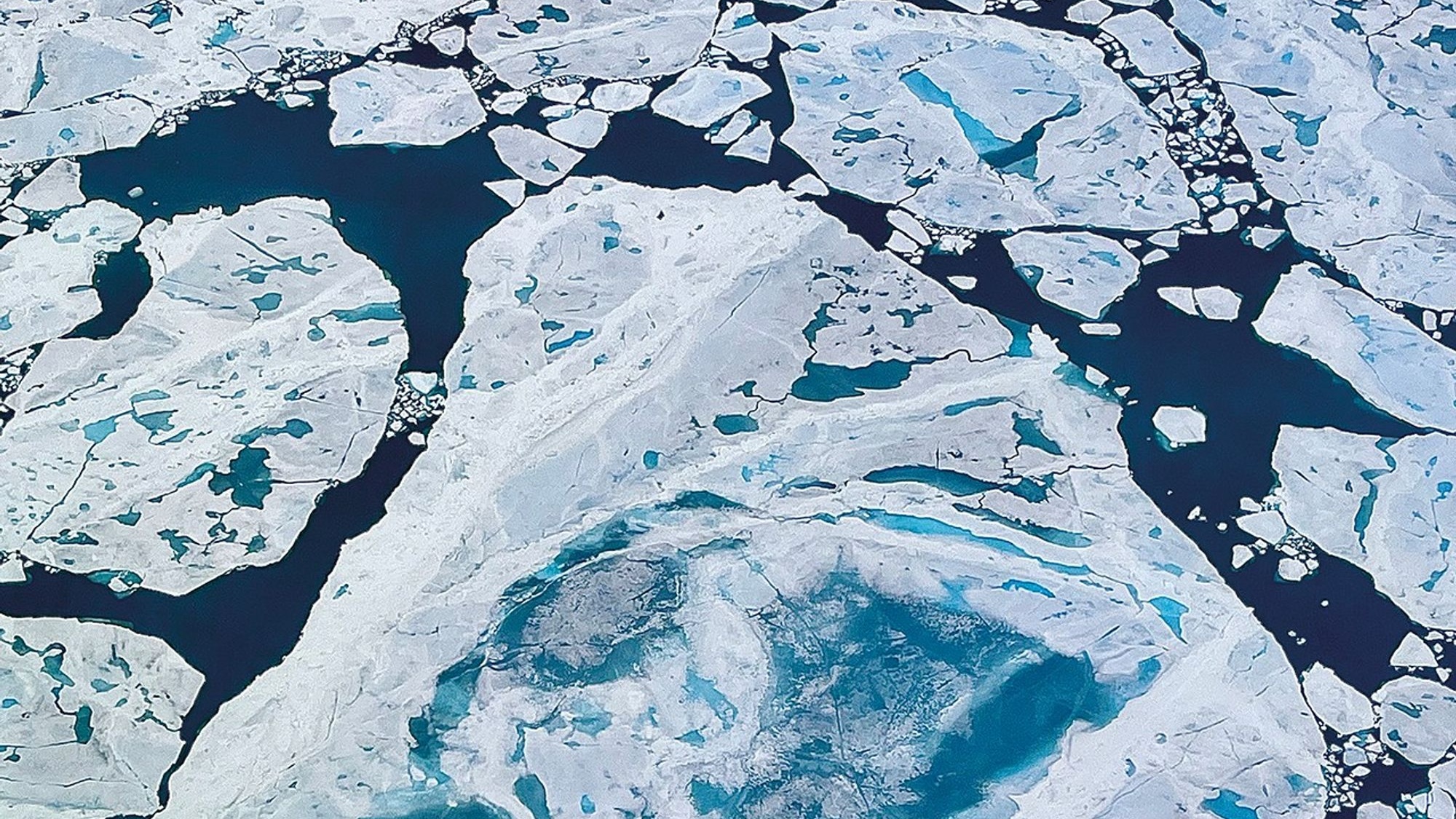Scientists create 5 new isotopes to learn how neutron star collisions forge gold
"This is probably the first time these isotopes have existed on the surface of the Earth."

Researchers have synthesized five new isotopes that could help bring the stars down to Earth — and coax scientists a step closer to understanding how collisions between ultra-dense, dead stars could create heavy elements like gold and silver.
The isotopes are Thulium-182, thulium-183, ytterbium-186, ytterbium-187 and lutetium-190; this is the first time they've been ever been synthesized on Earth. Their creation took place at the Facility for Rare Isotope Beams (FRIB) at Michigan State University (MSU) and represents a step towards building atoms on Earth that are typically only created in the ultra-turbulent environment around merging dead stars known as neutron stars.
"That's the exciting part," Alexandra Gade, FRIB scientific director and a professor in MSU's Department of Physics and Astronomy, said in a statement. "We are confident we can get even closer to those nuclei that are important for astrophysics."
Related: What happens when neutron stars collide? Astronomers may finally know
What's an isotope?
Each chemical element of the periodic table is defined by the number of protons in its atomic nuclei. For example, hydrogen always has one proton, helium always has two, and iron has 26. Hydrogen can't have two protons, and iron can't have 25; if they did, they wouldn't be hydrogen or iron anymore.
However, protons are joined in atomic nuclei by neutrons, and the number of these particles can vary without changing the nature of an element. Nuclei with varying numbers of neutrons are called isotopes of an element. So, isotopes of iron include iron-54 with 26 protons and 28 neutrons, iron-56 with 26 protons and 30 neutrons, and iron-57 with 26 protons and 31 neutrons.
The five newly synthesized isotopes are exciting, though, because they aren't commonly occurring on our planet. In fact, they have never even been found on our planet before.
"This is probably the first time these isotopes have existed on the surface of the Earth," Bradley Sherrill, University Distinguished Professor in MSU's College of Natural Science and head of the Advanced Rare Isotope Separator Department at FRIB, said in the statement. "I like to draw the analogy of taking a journey. We've been looking forward to going somewhere we've never been before, and this is the first step. We've left home, and we're starting to explore."
Breaking space news, the latest updates on rocket launches, skywatching events and more!
Superheavy isotopes and superheavy elements
Stars in general can be thought of as nuclear furnaces that forge the elements of the universe, beginning with the fusion of hydrogen to helium, which is then fused to forge nitrogen, oxygen and carbon.
The most massive stars in our universe can forge elements in the periodic table all the way up to iron, but scientists believe even these powerful stellar furnaces aren't sufficient enough to create elements heavier than that. But, what if two stars join their furnaces? And rather violently at that?
The thing is, when dying, massive stars are left with their cores of iron that can no longer fuse into heavier elements, the energy that has supported these stars against the inward push of their own gravitational influences also ceases. This causes the cores to collapse as the outer layers are blasted away by powerful supernova explosions.
This collapse can be halted, however, when the electrons and protons in these cores have been transformed into a sea of neutrons, which are prevented from cramming together by an aspect of quantum physics called "degeneracy." This degeneracy pressure can be overcome if a stellar core has enough mass, resulting in a complete collapse and creating a black hole. But sometimes there isn't enough mass. Those remain as dead, superdense neutron stars.
Furthermore, the end of this process doesn't mark the end of nuclear fusion for neutron stars if they happen to exist in a binary system with another massive star that also eventually collapsed to birth a neutron star. As these ultradense stars with masses between one and two times that of the sun crammed into the width of around 12 miles (20 kilometers) orbit around each other, they emit ripples in spacetime called gravitational waves.
Those gravitational waves carry away angular momentum from the system, causing the neutron stars to draw together and emit more gravitational waves at greater intensities. This continues until the two eventually smash together.
Unsurprisingly, given their extreme nature, the collisions of binary neutron stars create a very violent environment. The event sprays out neutron-rich matter, for instance, and that matter is believed to be important to the synthesis of gold and other heavy elements.
That's because these free neutrons can be grabbed by other atomic nuclei in the environment in what is called the rapid capture process or "r-process." These greedy atomic nuclei then grow heavier, creating superheavy isotopes that are unstable. Those unstable isotopes are expected to ultimately decay into stable elements, like gold, that are lighter than superheavy elements but still heavier than iron.
"It's not certain, but people think that all of the gold on Earth was made in neutron star collisions," Sherrill said. As a matter of fact, the James Webb Space Telescope recently found the best evidence yet for the theory.
So, how do we learn whether this process occurs with certainty?
If scientists could recreate the superheavy elements involved in the r-process, they could better understand the creation of gold and other heavy elements. Alas, the creation of Thulium-182, thulium-183, ytterbium-186, ytterbium-187 and lutetium-190. These isotopes, formed by firing a beam of platinum ions at a target of carbon at FRIB, might not be present in the wreckage of neutron star collisions, but their existence on Earth is definitely a step toward creating those briefly lived transitional superheavy elements on our planet to see if they result in elements like gold.
Down the line, a better understanding of these newly forged isotopes could also have important implications for nuclear physics.
"It's not a big surprise that these isotopes exist, but now that we have them, we have colleagues who will be very interested in what we can measure next," Gade concluded. "I'm already starting to think of what we can do next in terms of measuring their half-lives, their masses, and other properties."
The team's research was published on Thursday (Feb. 15) in the journal Physical Review Letters.

Robert Lea is a science journalist in the U.K. whose articles have been published in Physics World, New Scientist, Astronomy Magazine, All About Space, Newsweek and ZME Science. He also writes about science communication for Elsevier and the European Journal of Physics. Rob holds a bachelor of science degree in physics and astronomy from the U.K.’s Open University. Follow him on Twitter @sciencef1rst.

